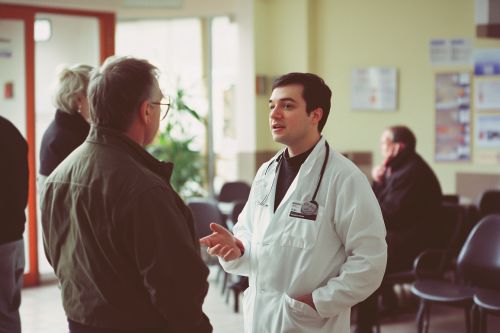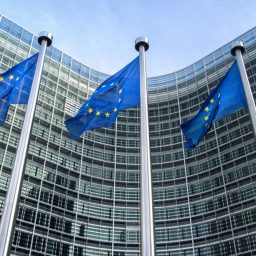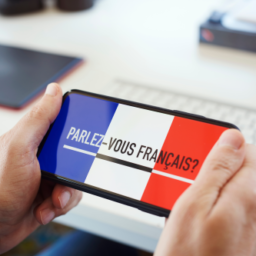

Language barriers affect patients and medical staff equally. Imagine you are in a foreign country, feeling unwell, and the doctor, the only one who could help, does not understand you at all.
Frustration, stress, and fear appear. You feel confused and have no idea what to do. Without communication, effective diagnosis and treatment planning is impossible. This is why we need to address language barriers in healthcare. How can you start overcoming language barriers?
Contents
Why is effective communication in healthcare so important?
Only if patients clearly express their symptoms, describe their medical history, and understand treatment advice, a recovery process can occur.
Good communication builds trust between the patient and medical staff. Without it, treatment becomes much more difficult. Language misunderstandings lead to diagnostic errors and have severe consequences for the patient’s health.
Patient information and medical history should be considered when administering medication. However, language barriers make this challenging. Sometimes, patients do not understand the questions and cannot answer them accurately.
Non-English-speaking patients may struggle to describe their pain levels to doctors. This creates a gap in tailoring treatment methods to the patient’s needs.
When English is not the patient’s native language, it can cause stress. Due to bad experiences and a lack of effective communication, they may be less likely to return for follow-up visits. Over time, this leads to a lack of trust in the healthcare system.
Language barriers create an unhealthy cycle of events. Misunderstood patients are more likely to end up in emergency rooms and be readmitted to the hospital.
How do language barriers affect healthcare workers?
Language barriers also impact healthcare workers. They cause stress and make it harder to provide quality care. Communicating with patients who do not speak the local language takes more time. Medical staff must spend extra minutes on explanations, using interpreters, or translating on the spot. This extends each consultation, leads to schedule delays, and increases workload.
Language barriers raise the risk of medical errors. Small misunderstandings result in incorrect medication dosages and inappropriate medical procedures.
What is the scale of the problem?
Language barriers are a daily reality for millions of people worldwide using medical services. In the US, according to the US Census Bureau, over 21% of people over the age of five speak a language other than English at home.
In the UK, the Office for National Statistics reports that about 9% of people do not use English as their first language. Language barriers are becoming increasingly noticeable in the healthcare system.
Language barriers in healthcare have far-reaching consequences for patient care. They lead to misunderstandings between healthcare workers and patients, resulting in:
- medication errors and adverse reactions,
- delayed or incorrect diagnoses,
- medical staff not fully understanding patients’ situations, and
- an increased risk of adverse events in hospitals.
In the US, limited access to healthcare affects over 65% of patients who only speak a foreign language. Up to 20% of non-English-speaking patients avoid seeking healthcare due to fear of being misunderstood by the staff.
Language barriers contribute to rising healthcare costs, as non-English-speaking patients make multiple visits and report worse health conditions than they have.



Examples of language barriers in healthcare
Doctors and patients who do not speak the same language struggle with sharing and receiving information. A patient may have trouble accurately describing their symptoms. A doctor finds it difficult to get the full medical history and explain the treatment plan.
Forms, consent documents, and medication instructions all need to be understandable to patients. Those unfamiliar with the local language find it difficult to fill out medical forms. Wrong answers could potentially mislead the doctor.
For non-native speakers, using telemedicine is a huge challenge. Technical issues, lack of online interpreters, and difficulties understanding instructions lead to low-quality medical care.
How can you overcome language barriers?
Language barriers decrease when a medical facility has an interpreter or a team of interpreters on-site. These professionals may accompany patients during medical visits. They help understand diagnoses, procedures, and treatment recommendations.
Hiring an interpreter creates a friendlier atmosphere for patients who speak different languages. When an interpreter is unavailable, translation apps can help with simple sentences. However, these translations are not always accurate, so they should not be used for communicating diagnoses or medical advice.
Language training for medical staff improves communication quality. Language courses focused on basic medical phrases in English enhance patient care. It is also beneficial to encourage administrative staff to learn foreign languages.
Cultural differences in body language
Body language varies widely across different cultures. What is considered normal in one country may be considered inappropriate in another. In Japan, bowing is a common greeting that shows respect, whereas, in many Western countries, a firm handshake is the standard.
Eye contact is another area where cultural norms differ significantly. In the United States and much of Europe, maintaining eye contact is seen as a sign of confidence and attentiveness. However, in some Asian cultures, prolonged eye contact can be considered rude or confrontational.
Gestures also carry different meanings across cultures. For instance, the “thumbs up” sign is a positive gesture in many Western countries, indicating approval or agreement. However, in some Middle Eastern countries, it can be interpreted as offensive.
Personal space preferences vary as well. In Latin American and Mediterranean cultures, people tend to stand closer to each other during conversations. It reflects warmth and friendliness. Conversely, in the United States and the United Kingdom, intruding on personal space makes people uncomfortable.
Facial expressions are often assumed to be universal, but they also are subject to cultural interpretations. While a smile indicates happiness or friendliness, the reasons of smiling differ. In some Asian cultures, people might smile when they are embarrassed or uncomfortable.



Medical document translation: Why is it necessary?
Medical documentation is a communication tool between doctors and various institutions, like insurance companies. It is especially important for patients treated or diagnosed abroad. It increases the care quality.
Translating medical history and other documents is essential when a patient wants to continue treatment in the home country. Overcoming language barriers allows doctors to check the prior treatment and take further steps without repeating expensive and time-consuming tests.
Medical translation for patients
Do your patients speak a foreign language? Would you like to avoid communication difficulties with doctors? We offer medical translation services to help you take care of them.
Our translators accompany patients during medical visits, translate medical documents, and assist in online consultations. We provide translations in over 100 languages, including English, German, Spanish, and Korean, available 24/7. We guarantee complete confidentiality of medical data.
Help your patients access the best medical care. Contact us and eliminate the language barrier.
Images: AI















